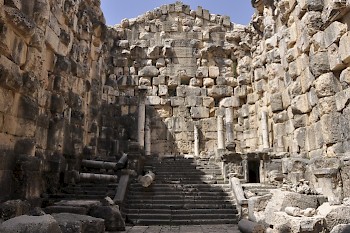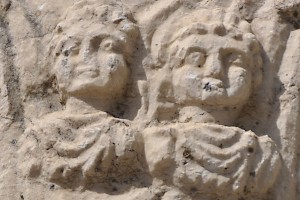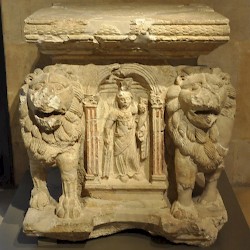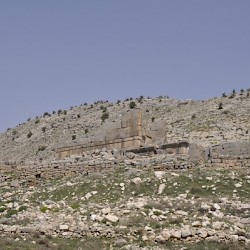Nihata (Niha)
Q1989857Nihata: site in the Bekaa valley with three Roman temples, modern Niha. The name is Syriac and means "tranquil".

The coastal road from Antioch to the south is a difficult one. Ancient and medieval travelers would prefer the road through the interior, going upstream along the Orontes to Beroea (Aleppo), Baalbek-Heliopolis, and down to Tyre along the Leontes (modern Litani). They would keep the Lebanon to the west and the Anti-Lebanon to the east. The valley between these two mountain ranges is called the Bekaa, and there were many sanctuaries along the road.
One of these was at Nihata, a village that belonged to the colony of Berytus. Situated on the eastern slopes of Mount Sannin (a summit of the Lebanon), it was probably identical to the modern village of Niha. Here, close to a small river, the local god Hadanares and the goddess Atargatis were venerated. Their names can be read on several inscriptions; they are also shown as part of the portrait of the high priest Narkisos, on the façade of the large temple.

There were several temples in Nihata. The large Temple A was an oracular shrine, dedicated to Hadanares and Atargatis; across the small river was the small Temple B, dedicated to the same deities. These sanctuaries were probably built in the first or second century. Two other shrines can be found at Hosn Niha, situated in an isolated valley, some three kilometers up along the road. They are younger, and are probably to be dated to the late second or early third century. In the neighborhood is the temple of Qsarnaba.
 Niha, Small temple, Façade |
 Niha, Altar with lions, dedicated to a female deity (Atargatis) |
 Niha, Roman altar, dedicated to a female deity (Fortuna), with two lions |
 Hosn Niha |
Literature
- Guillaume Gernez and Ingrid Périssé-Valéro, Le Liban. De la Préhistoire à l’Antiquité (2010)